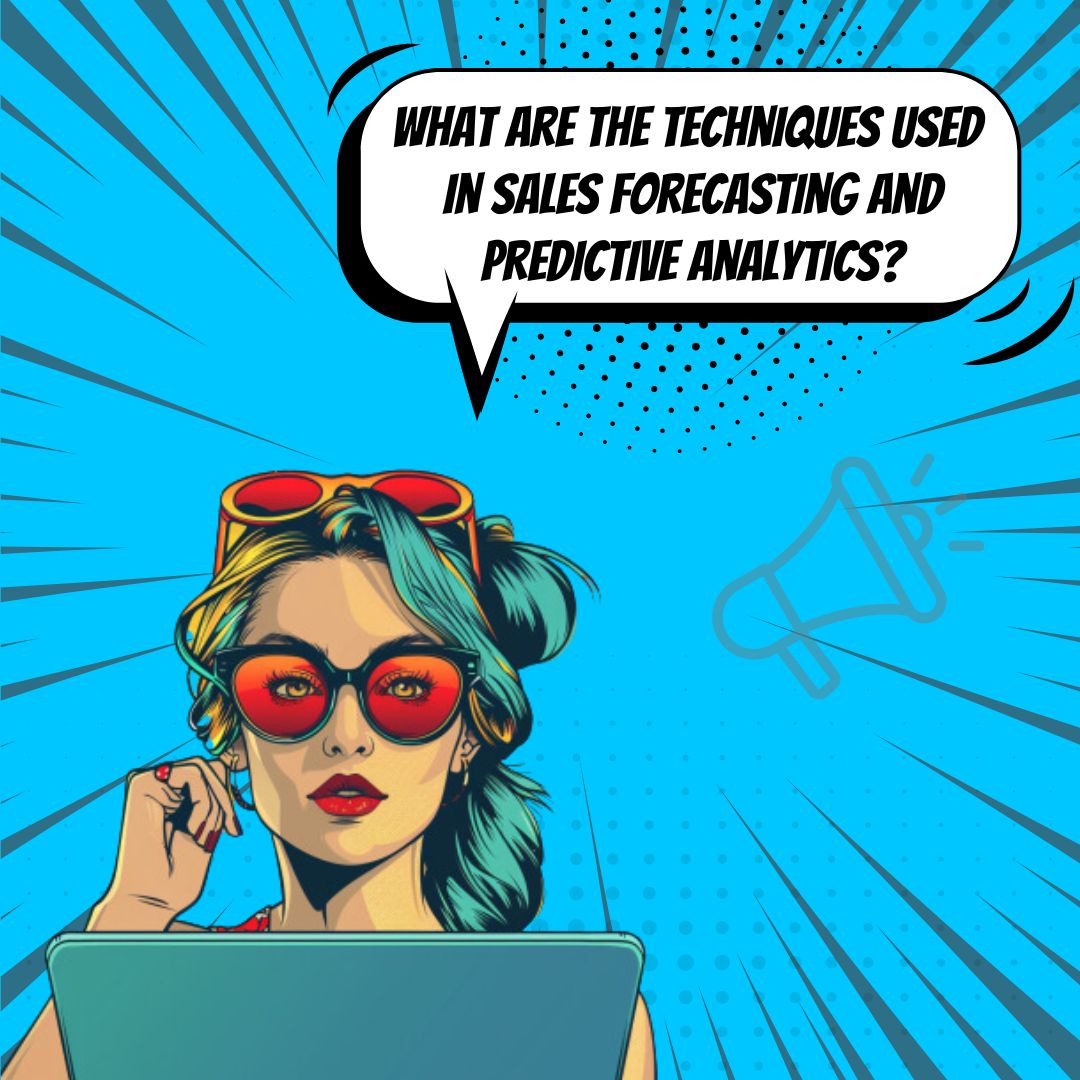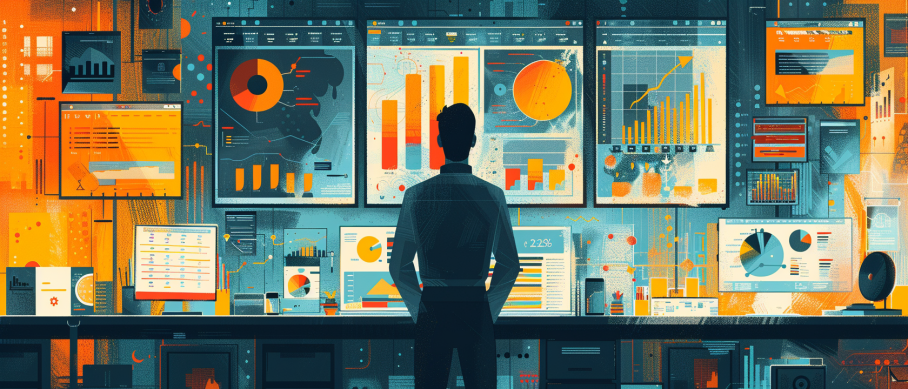Key Takeaways
✅ Predict the Future with Accurate Sales Forecasting: Statistics show that companies using sophisticated forecasting systems notice a 10% increase in their accuracy. Accurate sales forecasting equips your business with the knowledge to strategically manage inventory, adjust marketing campaigns, and plan ahead with greater confidence.
✅ Boost Your Strategy with Predictive Analytics: Leveraging predictive analytics can improve your sales forecasting accuracy by up to 20%. This advanced approach uses historical data and modern algorithms to understand market dynamics, offering a robust way to anticipate customer needs and stay one step ahead of the competition.
✅ Data Quality and Advanced Modeling: The Success Duo: High-quality data is non-negotiable, as even a 1% inaccuracy can lead to significant revenue loss. Employing sophisticated modeling techniques, like machine learning, can aid in identifying complex patterns that would otherwise go unnoticed, leading to more precise demand forecasting and smarter business decisions.

Introduction
How sure are you about what tomorrow holds for your business? Imagine pulling back the curtain to reveal not just educated guesses, but data-driven predictions that map out your sales journey ahead. Sales forecasting and predictive analytics are reshaping how businesses understand market trends and prepare for the future. This article untangles these complex concepts and turns them into actionable insights you can use to fuel your company's growth.
Are you tired of playing catch-up with market shifts and customer demands? Sales forecasting methods and predictive analytics are the compasses modern businesses need to navigate the ever-changing seas of commerce. With these tools, you're not just following trends—you're predicting them, and even better, shaping them to your advantage. Hold tight, as we're about to embark on a quest to distill groundbreaking techniques and statistics that have the potential to skyrocket your business's ROI. Ready to trade uncertainty for a clear vision of tomorrow? Let's get started.

Top Statistics
| Statistic | Insight |
|---|---|
| Accuracy of Predictive Sales Forecasting: Predictive forecasting can improve sales accuracy by 10-15%. | This level of improvement signifies how crucial adaptive algorithms and machine learning are for refining sales strategies. |
| Real-Time Adaptation: Predictive sales forecasting allows for instant adaptation when market changes occur. | Having a finger on the pulse allows businesses to respond quickly and maintain a competitive edge. |
| Identifying Risks: Predictive sales forecasting helps identify potential risks in the sales pipeline. | Forearmed with this knowledge, businesses can strategize proactively to mitigate risks before they impact the bottom line. |
| Improved Lead Prioritization: Evaluating the success potential of leads to focus on those with the highest likelihood of conversion. | Effectively prioritizing leads can drastically boost efficiency and maximize the chances of sales success. |
| Aligning Business Goals: Predictive forecasting aligns different business departments around common goals. | Syncing up departments ensures cohesive efforts that contribute to overall business growth and goal achievement. |
Sales Forecasting
Sales forecasting plays a key role in navigating the future of your company's revenue streams. Think about it - if a captain of a ship doesn't have a reliable map, how can they steer the ship to its destination? Similarly, by estimating future sales revenue, businesses craft that very map, allowing them to foresee where the market winds will blow next. It's not about crystal balls or magic - it's about data, analysis, and educated guesses. With this insight, you can anticipate changes, pounce on potential growth opportunities, and fine-tune operations to stay ahead of the curve.

Understanding the Importance of Sales Forecasting
Why is everyone in the boardroom fixated on accurate forecasting? Because when you get it right, you're able to adapt swiftly to market swings - which, let's face it, happen more often than we'd like. But let's ground this in reality: studies indicate that companies that excel at sales forecasting are 10% more likely to grow their revenue year-over-year and 7.3% more likely to hit quota. That’s a significant edge in today's hyper-competitive markets.
8 Effective Sales Forecasting Methods
You might wonder, "What's the best way to forecast sales?" Well, there isn't a one-size-fits-all answer. Methods range from the simple time series forecasting models, which look at your past sales and try to see the pattern for the future, to complex multivariable analysis sales forecasting models that consider everything from what your customers are like to what's going on in the economy. Then there's the opportunity stage sales forecasting models, which are a bit like looking at how many fish you've already got on the line to guess how many you'll catch.
The Role of Predictive Analytics in Sales Forecasting
Enter predictive analytics – the brainy cousin of regular analytics. By gathering chunks of data, predictive analytics throws complex algorithms and machine learning into the mix to spot patterns and predict future sales. This is nerdy stuff, but it's incredibly powerful. It’s like having a smart assistant who tells you what could happen next, not just what has happened before.
Benefits of Predictive Analytics Sales Forecasting
But why tangle with predictive analytics? It's all about getting smarter and faster. With it, you can get your sales forecasts on the money, adjust your game plan in real-time, and better meet what your customers want. More than just guesstimates, these are forecasts based on solid data analyzed with the latest tech. Companies that dive deep into predictive analytics can not only see a more accurate future but can also shape it.

Challenges of Predictive Sales Forecasting
However, challenges lay ahead for the predictive prophets. Junk in means junk out, so inaccurate data is a big no-no. Plus, we can't forget the unpredictable nature of people, making complex buying behavior tough to pin down. And then there’s the world itself, with its trend shifts, economic shakeups, and the ever-looming competitors. This unpredictability makes accurate forecast more art than science.
Best Practices for Implementing Predictive Sales Forecasting
So, how to not just survive but thrive with predictive forecasting? First, it has to be a team sport - get everyone involved, from the ground salespeople to the top brass. Make it data-driven to cut out wishful thinking. Ensure your tech can keep up with the pace and let you pivot quickly when the market does its thing. Go for a single source of truth, but make sure you can look at it from different angles to understand how each piece of the puzzle fits into the bigger picture. And remember, learning is doing – keep honing your forecasts with every shred of new information.
AI Marketing Engineers Recommendation
Recommendation 1: Leverage Machine Learning for Accurate Sales Forecasting: Embrace machine learning algorithms to analyze historical sales data, market conditions, and customer behaviors. Studies show that machine learning can improve forecast accuracy by up to 15%. Efficiently utilize your resources by predicting future sales trends, thus reducing inventory costs and maximizing profit margins.
Recommendation 2: Integrate Real-time Data for Improved Predictive Analytics: Make sure your predictive models incorporate real-time market data. With digital ad spending expected to increase to $526 billion by 2024, staying current is more important than ever. Use real-time analytics to quickly identify and respond to emerging trends, changes in consumer behavior, and competitive actions, enabling your business to remain agile and proactive in strategic planning.
Recommendation 3: Apply Predictive Analytics to Customer Lifecycle Management: Use predictive analytics to enhance your customer relationship management. By understanding the customer journey, you can predict future buying behaviors and preferences. According to a Salesforce report, high-performing marketing teams are 9.7x more likely to actively use predictive analytics. Implement tools like CRM systems with built-in analytics to segment your audience, personalize marketing campaigns, and increase customer retention and lifetime value.

Relevant Links
- Forecasting Mastery: Boost Sales with Data-Driven Analytics
- Dominating Digital Sales: Advanced Forecasting Techniques for India
- Navigating China's Market Trends: Utilize Analytics for Consumer Insights
- Unlocking Russia's E-Commerce Potential with Forecasting Tools
- Revolutionizing Retail with AI-Driven Sales Forecasting in South Korea
Conclusion
In the brisk waters of the business world, the ability to not just navigate, but to anticipate the currents of market changes, has never been more crucial. Sales forecasting and predictive analytics are at the forefront of equipping companies with the insights necessary to stay ahead. As we've discovered, accurate sales forecasting is tantamount to setting the sails for future business success, enabling organizations to adapt swiftly to changing market conditions, uncover growth opportunities, and fine-tune their operations to the rhythms of demand.
Mastering the various methods of sales forecasting, from time series to multivariable analysis, is like harnessing different winds to propel your business ship forward. When paired with the sharp edge of predictive analytics, sales forecasts transform into a panoramic scope, bringing future horizons into clear view. The benefits are compelling: enhanced forecast accuracy, real-time insights for agile decision-making, improved performance, and of course, informed strategic planning.
Yet, as with any predictive endeavour, challenges such as data quality, complex consumer behavior, and unpredictable external factors, can cloud our forecasts. By adopting best practices, such as a collaborative, data-driven approach and investing in real-time capabilities, businesses can more effectively navigate these uncertainties.
Going forward, it is evident that predictive analytics in sales forecasting will continue to evolve, sharpening its accuracy and broadening its scope. Now is the time to look ahead, ask how your business can leverage these advanced tools, and truly embrace the power of prediction. Stay informed, stay prepared, and let the future of your sales be guided not by guesswork, but by intelligent forecasting. Will your company be one that sees the future and seizes it?

FAQs
Question 1: What is predictive sales forecasting?
Answer: Predictive sales forecasting is a technique that uses data, statistical algorithms, and machine learning to estimate the likely future sales of a company.
Question 2: What data is needed for predictive sales forecasting?
Answer: You'll need historical sales data, customer and market information, and other influential factors that could shape your sales trends.
Question 3: What methods or algorithms are used in predictive e sales forecasting?
Answer: Techniques like linear regression, time series analysis, and machine learning methods, including random forests and gradient boosting, are pretty common.
Question 4: Can predictive sales forecasting be accurate?
Answer: Yes, it can be, especially compared to traditional methods, but remember, forecasting is not about certainties; it's about making educated guesses.
Question 5: What is the role of predictive analytics in sales forecasting?
Answer: Predictive analytics helps to make sales forecasts more accurate by evaluating past sales data and other indicators to foresee future performance.
Question 6: How does predictive sales forecasting differ from traditional forecasting?
Answer: Unlike traditional forecasting, which often relies solely on historical data, predictive sales forecasting employs advanced algorithms to consider various factors and anticipate sales.
Question 7: What are the benefits of predictive sales forecasting?
Answer: Improved forecast accuracy and the ability to make real-time predictions are two major perks, which help in resource planning and inventory management.
Question 8: How to get started with predictive sales forecasting?
Answer: Begin by gathering the right data, analyze it for patterns using statistical models, and then use these insights to project future sales figures.
Question 9: What are some common challenges of predictive sales forecasting?
Answer: Challenges can stem from inaccurate data to unpredictable market trends and complex customer behaviors that are hard to quantify.
Question 10: How can predictive sales forecasting be used in different industries?
Answer: It's versatile! Whether you're in finance, retail, or manufacturing, predictive sales forecasting can fine-tune how you manage resources and plan for sales.
Question 11: What are some popular predictive modeling techniques?
Answer: Techniques range from random forest and YOLO to neural networks and models like ARIMA and LSTM - there's a rich set of tools for you to choose from.
Question 12: How can predictive sales forecasting be integrated with other business functions?
Answer: By combining it with other areas such as finance and marketing, you ensure that your sales insights are woven into the broader tapestry of business decisions.

Academic References
- 6sense. (2024). How to Use Predictive Sales Forecasting in 2024. This source lays out the intricacies of predictive sales forecasting, spotlighting advanced analytics and data modeling as key tools for businesses to anticipate future sales and maintain a competitive edge.
- ThoughtSpot. 8 Sales Forecasting Methods For Predicting Revenue. This reference discusses eight diverse methods of sales forecasting and examines how historical data and market analysis are pivotal in forecasting future sales revenue.
- GetAccept. How to use predictive analysis to simplify sales forecasting. The reference digs into the utilization of historical and current data for predicting sales results, stressing on the significance of preparing for market demand and boosting leads through methodologies such as machine learning and data mining.
- Anaplan. Sales Forecasting Methods: A Beginner's Guide. This guide accentuates the essential nature of accurate sales forecasting for businesses to navigate strategic decision-making, by explicating the process of estimating future revenue and product sales within a certain timeframe.






